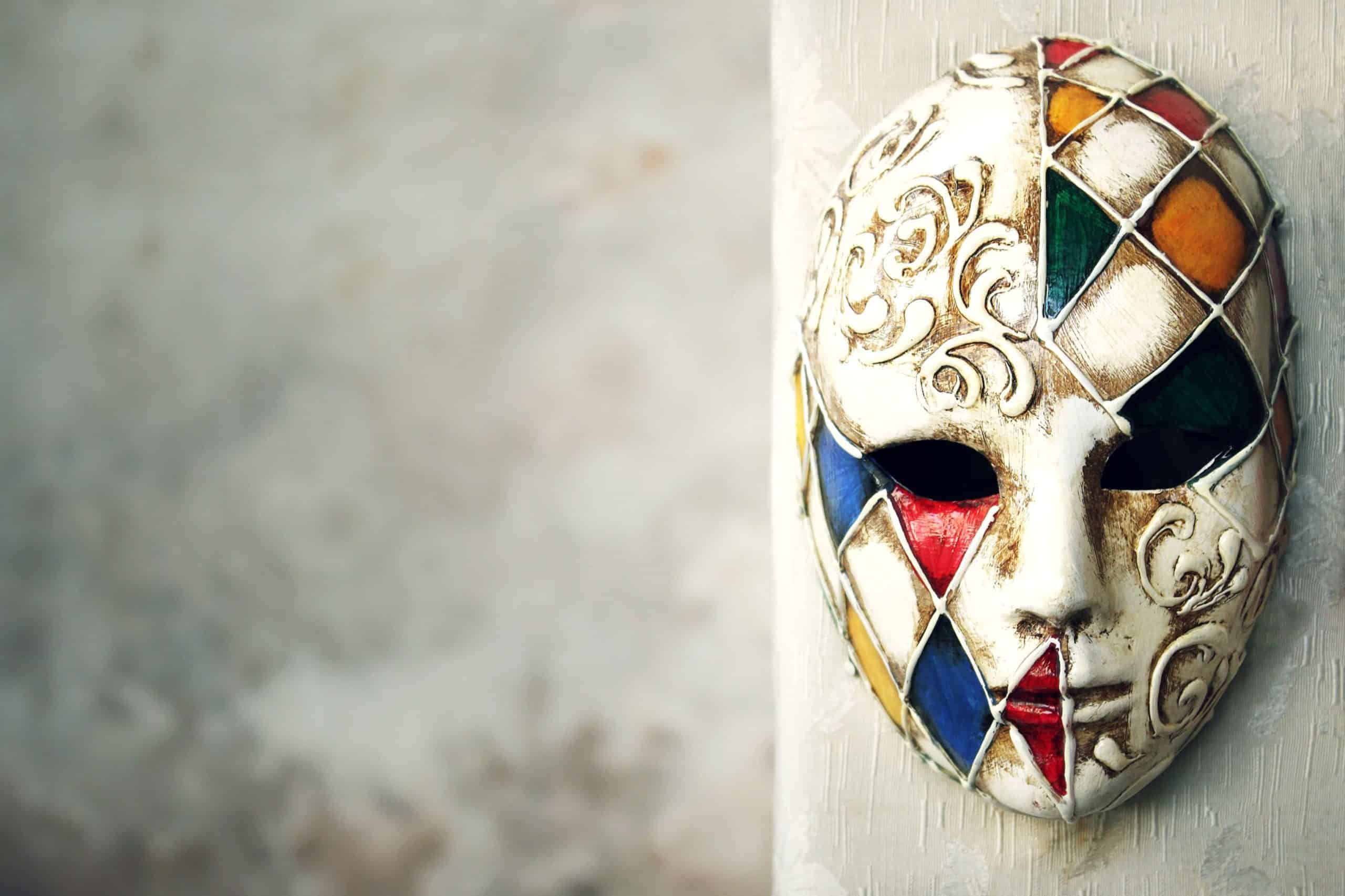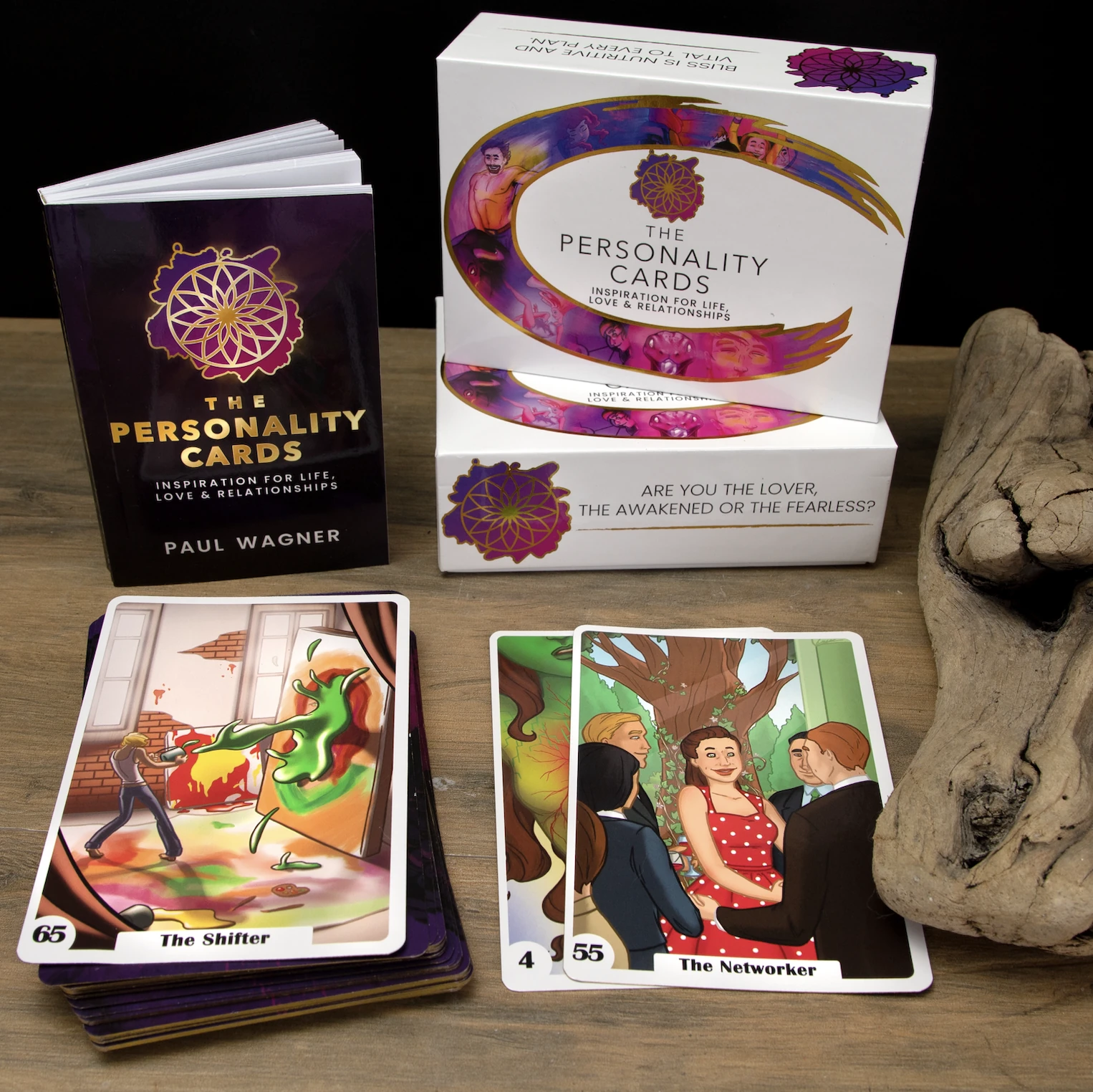
The Personality Cards are symbols, archetypes and metaphors for aspects of our personalities that can be found within all of us. When we understand what these symbols mean, we can use the personality cards to interpret experiences, situations and our relationships with ourselves and others, giving us insight into our daily lives to help us along our spiritual journeys.
The Personality Cards were made with the influence of Carl Jung, a famous theorist whose pioneering research into the human mind and psyche allowed us to understand the similarities within one another through symbols and the common stories that we tell.
Carl Jung and the Human Psyche
The influence of Carl Jung was really to popularize the idea of archetypes, or symbols of the collective consciousness, when he was doing his research and clinical practice in the early twentieth century. Jung separates parts of our personality out into that which we are conscious of and elements that we are unconscious of. Our conscious mind is where the ego sits and this ego is made up of the pieces of our personality that we are aware of.
According to Jung, people have ‘personas,’ which are an aspect of personality that comes from a desire to please or be accepted by others. This is the face that we choose to let others see, while our other, unwanted traits are buried deep.
There are four major aspects of the human psyche that Jung identified:
- The Self: The center of the personality or psyche, your conscious awareness
- The Shadow: The dark and emotional aspect of your psyche
- The Anima/Animus: Both are unconscious versions of the masculine or feminine sides of the opposite sex
- The Persona: The mask you wear to show the world while you protect your inner self
The Influence of Carl Jung “Persona”
Your persona is, at its core, the person who you want to be and who you show up as to everyone else. It is often tied into societal expectations and influenced by those around us. It is the mask that you wear when you are around others. In essence, it is almost a compromise of who you truly are. These masks that we wear are versions of ourselves that want to fit in or make an impression on others, but then on the other hand want to conceal our true nature from others.
There can be various shelves in life from where human beings collectively pull masks from. It can be your occupation, the religious group you are born in, your political views, or your sexual orientation, just to name a few. Some examples of personas, or the roles you play, can be teacher, lawyer, doctor, policeman, mother, father, husband, wife, etc. The persona thus helps an individual to adapt to the external social world.

How Our Personas Hold Us Back
If you identify too strongly with a specific persona, you can limit your psychological growth. For example, if you continuously identify with your outward persona, you might find yourself becoming too concerned with how others perceive you, which can cause a negative self-image and for you to develop superficial tendencies. You begin to believe that you are who you pretend to be and that your persona is your true self, but in reality, it is only a part of you and not a reflection of your inner individuality.
Our Collective Unconscious: The Archetypes
Archetypes are ancient, universal symbols and characters that reside within the collective unconscious of people all over the world. These 12 symbols can take the form of images, ideas, or patterns of behavior. Archetypes can be seen as characteristics of the psyche, all of which we possess within ourselves.
Jung hypothesized that archetypes are the root of our behavior and that they influence everything from the way we behave in relationships to the way we see the world. Jung believed that these are, in fact, metaphors for aspects of our collective unconscious and this is why these symbols can be found throughout the world.
These archetypal images find their way into ancient religions, myths, legends, and fairy tales. We find evidence of collective unconsciousness and archetypes in our dreams, fantasies, and behavior. Every character in both our personal dreams and collective myths is an archetype, and we can observe them in the stories we read, the films we watch, and the plays we attend. The influence of Carl Jung archetypes affects our relationships and interactions with others and ourselves.
Here are Jungian archetypes and their shadow counterparts:
1) Archetype: The Ruler (also called The Father) is an archetype that is about control, power and order. These are the leaders we look to that are decisive and have a clear vision. The Ruler archetype wants to bring out the best in everyone.
Shadow: The Tyrant, on the other hand, is one that is repressive, dictatorial and oppressive, taking control to its most extreme. If this shadow archetype affects you, you might find yourself needing to constantly prove your worth and feel your best when you have power over others.
2) Archetype: The Rebel is the one who challenges our systems and likes to do things the way that they want to do them. In other words, they are the counter-culture rebels that stand up to authority because they are driven by what they believe in.
Shadow: The Anarchist just wants to see the world burn. They are chaotic, disruptive and destructive. An Anarchist might continuously challenge authority for no good reason, just to be disruptive, and they may feel like they need to constantly defy societal norms in the process.
3) Archetype: The Lover craves connection through passion and intimacy, one who is deeply romantic and appreciates sensuality and beauty in all of its forms.
Shadow: The Seducer takes this passion to the extreme and will often be manipulative and seductive in a way that uses sex as a weapon. People who identify with this shadow archetype can find themselves constantly pursuing a lover or needing to be in a relationship. As well, they could use their sexuality to control others.
4) Archetype: The Caregiver, also known as The Mother, is all about nurturing, caring for and supporting others. They always want what is best for someone else and to make sure that others needs are met. They are selfless and will put the needs of others above their own.
Shadow: The Martyr can be found in the shadow of The Caregiver. The martyr will be self-sacrificing, codependent and will be found in relationships where they are really not valued or appreciated. This is a version of victimhood.
5) Archetype: The Creator embodies imagination, artistic and self-expression. They have strong imaginations and take joy in the creation of things.
Shadow: The Perfectionist is the version of The Creator where they believe that nothing they create will ever be good enough. They are hypercritical of themselves to the point where they will abandon their projects rather than be disappointed by what they create. Often, they will procrastinate.
6) Archetype: The Sage is all about knowledge, wisdom, and understanding. They can have a deep understanding of the world and can see things from other perspectives, making their insights very valuable.
Shadow: The Know-It-All is someone who desperately wants to be The Sage, but is arrogant, close-minded and skeptics. They constantly question or doubt others capabilities and are very critical of others, but never themselves.
7) Archetype: The Innocent archetype is one that is, well, innocent! They approach the world with a childlike wonder, can be a bit naive but are always very pure of heart. They are often very trusting of the world and those around them.
Shadow: The Victim will be gullible, helpless and powerless. These types will constantly be taken advantage of or get into situations where they have little to no control. When The Victim is naïve, they are too trusting and can get themselves into challenging situations.
8) Archetype: The Explorer type is all about freedom and seeking thrills or adventure. They are independent and free-spirited, always on the lookout for new experiences.
Shadow: The Wanderer is someone who seeks to be free, but instead they drift through life aimlessly or directionless. In their quest for independence, they move constantly or will change jobs frequently. Often, they are restless and bored.
9) Archetype: The Hero archetype is one that is determined, courageous and has an inner (or physical) strength. They are brave and will put the well-being of others before them. They aren’t afraid of a challenge.
Shadow: The Bully is an overly aggressive shadow archetype, often picking fights with others just for the sake of it. They are abusive, violent and can be intimidating.
10) Archetype: The Wizard (or The Shaman) is the one who understands the universe and does their best to heal it through their acquired knowledge and experience.
Shadow: The Sorcerer archetype is one that uses their knowledge of things for evil or something deceptive. These types are manipulative and cunning, who will often stop at nothing to achieve their ends.
11) Archetype: The Jester archetype aims to bring joy and happiness to others, using jokes or other means to make us laugh. This helps to alleviate suffering and to help people find joy in difficult situations.
Shadow: The Fool (of The Trickster) is a malicious, irresponsible and careless version of The Jester, using wit or humour to deceive others for their own personal gain.
12) Archetype: The Everyman archetype likes the status quo. They are the ones who crave normality and, quite simply, just being ordinary. They don’t crave attention or the spotlight and are most comfortable quietly contributing to society as a whole, without the need for acknowledgment.
Shadow: The Slacker type is one that fears being left out of the group but does not enjoy standing out or contributing in any way. There is an intense fear of abandonment and a lack of self-identity.
Paul Wagner’s Personality Cards
Although the twelve archetypes identified by Jung (and their shadow counterparts) are incredibly useful when describing personalities, we all cannot identify with these 12 archetypical figures – there are simply not enough! The 78 personality cards by Paul Wagner aim at inspiring people divinely in relationships, life, and matters of love.
These personality cards help one not only discover their personalities but also act as a guide to help people navigate issues like forgiveness and other situations. Each card has a symbolic image that is unique to a person. These personality cards are an extension of Carl Jung’s archetypes and provide an even deeper look into our psyches, but most importantly, they are used as a tool to help you along your spiritual journey.
A look into these personality cards will help you discover yourself and how to navigate your relationships with others. The messages at the back of the card give a simple reading into the personality the card identifies with. Which ones resonate most with you?

Meet Paul Wagner
Paul Wagner is an Intuitive Life & Business Coach, clairvoyant reader, and five-time EMMY Award-winning writer. He created “THE PERSONALITY CARDS,” a powerful Oracle-Tarot deck that’s helpful in life, love, and relationships. Paul studied with Lakota elders in the Pecos Wilderness, who nurtured his empathic abilities and taught him the sacred rituals. He has lived at ashrams with enlightened masters, including Amma, the Hugging Saint, for whom he’s delivered keynotes at Her worldwide events.
Paul tours the world lecturing on spiritual liberation. He lovingly offers intuitive readings, inspirational coaching, and illuminating courses to help others with self-discovery, decision-making, healing, and forgiveness. Book a session with Paul: HERE.



